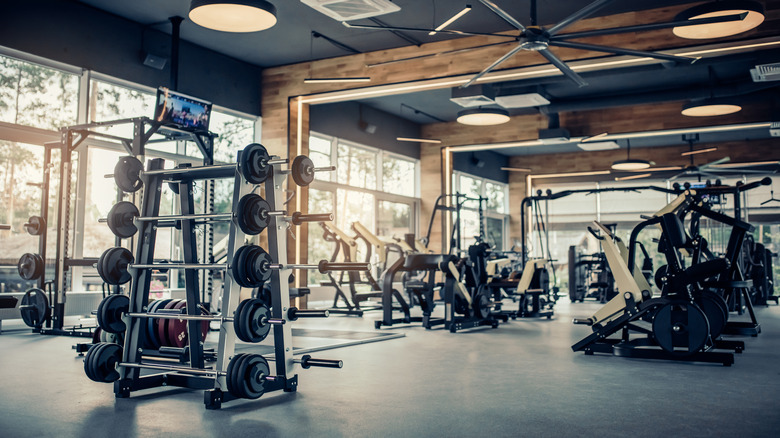How To Know How Much Weight You Should Be Lifting
Do you want to start lifting weights but you're feeling a little overwhelmed? It can be daunting walking into the gym and seeing all the different machines and free weights. Where do you start? The good thing is everyone had to be a beginner in weightlifting at some point, even those buff bodybuilders. So you can get started too.
Weightlifting isn't just for bodybuilders and professional athletes. Everyone can benefit from strength training, and it's never too late to start. According to Everyday Health, the benefits of weightlifting include everything from stronger muscles to improved balance to even a better mood. Additionally, Insider revealed that weightlifting reduces your risk of injury and improves heart health.
However, you shouldn't just dive in and attempt to lift the heaviest weight you see. If you are ready to start lifting and reap some amazing benefits, start slow and with the appropriate amount of weight. Here's how to know how much that is.
Getting started
Before you even reach for the free weights, you first need to make sure you can perform the exercise with your own body weight, according to Nerd Fitness. Practice the movement of the exercise, perfect your form, and make sure you are able to appropriately lift your own body before you add any excess weight. As a result, you'll reduce your chances of getting injured.
Next, you can progress to holding a broom or one long PVC pipe to mimic a barbell. Alternatively, you can choose two short PVC pipes to simulate holding dumbbells. Consider trying barbell squats, deadlifts, or bench presses to begin. Once you can do them with proper form, you can move to the bar, which usually weighs 35 to 45 pounds, advised Nerd Fitness. That weight will feel heavy at first, so go slow and don't push yourself too hard. Ask the gym staff if they have a lighter barbell if you need to. If they don't have a lighter bar, use light dumbbells instead. Keep practicing slowly and focus on your form throughout the exercise.
How many sets and reps should you perform?
When progressing to adding weights to the barbell, Verywell Fit recommends starting with three sets of 10 reps for each exercise, resting for 30 to 60 seconds between sets. You should feel a little bit of difficulty when you get to the end. But if you have to strain, hold your breath, or start breaking form, your weights may be too heavy. Finding that just-right weight can be difficult, but you can do it by listening to your body. You can move up in weight when you feel like you can lift the weights easily.
How many reps and sets you continue to do depends on your fitness objective. According to Bodybuilding.com, you should first determine your goal, which could be increasing your strength, increasing your muscle size, or increasing muscle endurance. For example, rest for three to five minutes between reps and lift heavier weights to improve your strength. When training for increased muscle size, choose weights with which you can perform eight to 15 reps with three to four sets and rests of 60 to 90 seconds in between. If your goal is improved muscle endurance, go for lighter weights for 15 to 20 reps or more.



